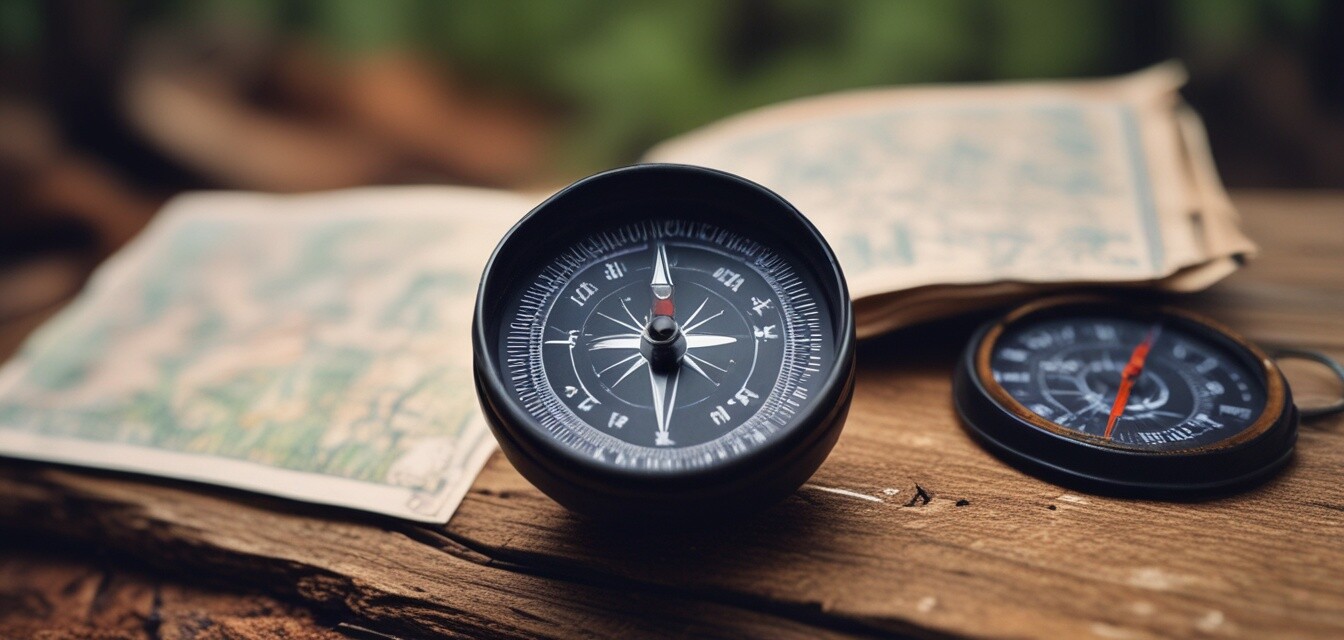
As an Amazon Associate, I earn from any qualifying purchases, at No Extra Cost to You.
Essential Navigation Gear for Backpackers
Key Takeaways
- Navigation gear is vital for safe backpacking adventures.
- Maps, compasses, and GPS devices each play unique roles.
- Understand how to use each type of navigation tool effectively.
- Always have a backup navigation method in case of device failure.
- Familiarize yourself with local geography and terrain features.
When venturing into the great outdoors, staying oriented is crucial. Whether you're a seasoned backpacker or just starting your journey, having the right navigation gear can enhance your safety and streamline your adventures. This guide will delve into the essential navigation gear backpackers should consider. We'll explore traditional tools such as maps and compasses, as well as modern favorites like GPS devices.
Understanding Your Navigation Tools
Before embarking on a backpacking trip, it's essential to understand the various navigation tools available to you. Here are the primary categories:
| Type | Description | Pros | Cons |
|---|---|---|---|
| Maps | Physical representations of the terrain, including topographic details. | Always reliable, no batteries required. | Can be difficult to read or damaged in wet conditions. |
| Compasses | Magnetized tool used for orientation with maps. | Simple to use, no technology needed. | Requires knowledge of how to use accurately. |
| GPS Devices | High-tech tools that provide real-time location data. | Highly accurate and user-friendly. | Depend on battery life and satellite connectivity. |
Essential Navigation Gear
When stocking up on navigation gear, consider the following essentials:
- Topographic Maps: Indispensable for understanding the terrain.
- Compass: A classic tool that never fails you.
- GPS Device: A handy tool for precise location tracking.
- Smartphone with Navigation Apps: Many apps can function offline; however, consider a power bank to keep your phone charged.
- Emergency Whistle: Useful for signaling your location in an emergency.
How to Use Maps and Compasses
Knowing how to read maps and use a compass enhances your navigation skills. Here's a quick guide:
- Reading a Map: Familiarize yourself with map symbols and scales.
- Orienting a Map: Hold your map flat and align it with the terrain, using the compass.
- Using a Compass: Determine your heading and compare it with the map to plan your route.
GPS Devices
With technology advancing rapidly, GPS devices have become a popular choice among backpackers. Here's why:
Pros
- Provides real-time location data.
- Simplifies route planning with preloaded maps.
- Can track your previous routes for easier navigation.
Cons
- Requires batteries or charging.
- Can malfunction in areas with poor satellite reception.
- May not be necessary for less challenging hikes.
Tips for Using Navigation Gear
Beginners Section
- Always carry a backup map and compass even if you're using a GPS device.
- Practice using your navigation gear before hitting the trails.
- Know how to align your compass with the map for accurate navigation.
- Take time to familiarize yourself with the area you will be hiking.
- Stay updated with weather changes as they may affect visibility.
Conclusion
In summary, investing in essential navigation gear is crucial for any backpacking trip. Equip yourself with reliable maps, a sturdy compass, and a modern GPS device to ensure you can confidently traverse any trail. Don't forget to enhance your navigation skills through practice and preparation. By familiarizing yourself with your tools, you'll be well-prepared and can enjoy the wonders of the great outdoors.
For those looking for other essential gear, check out our Backpacks and Buying Guides categories for more information.
Happy backpacking, and may you always find your way!